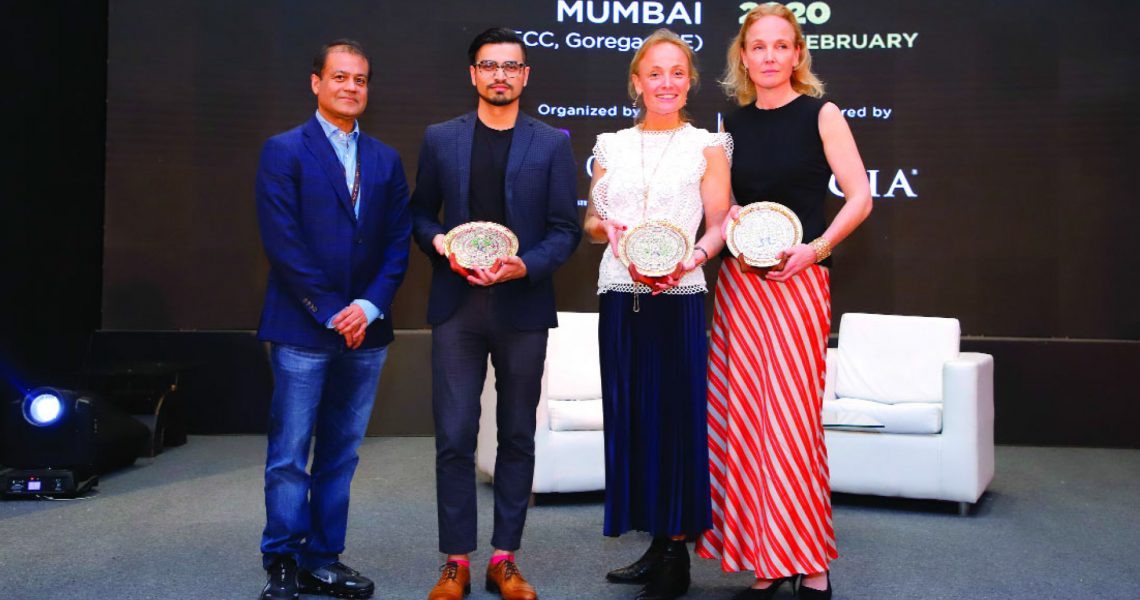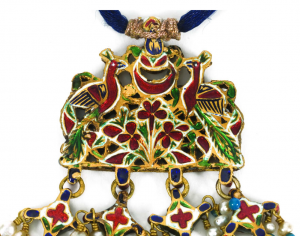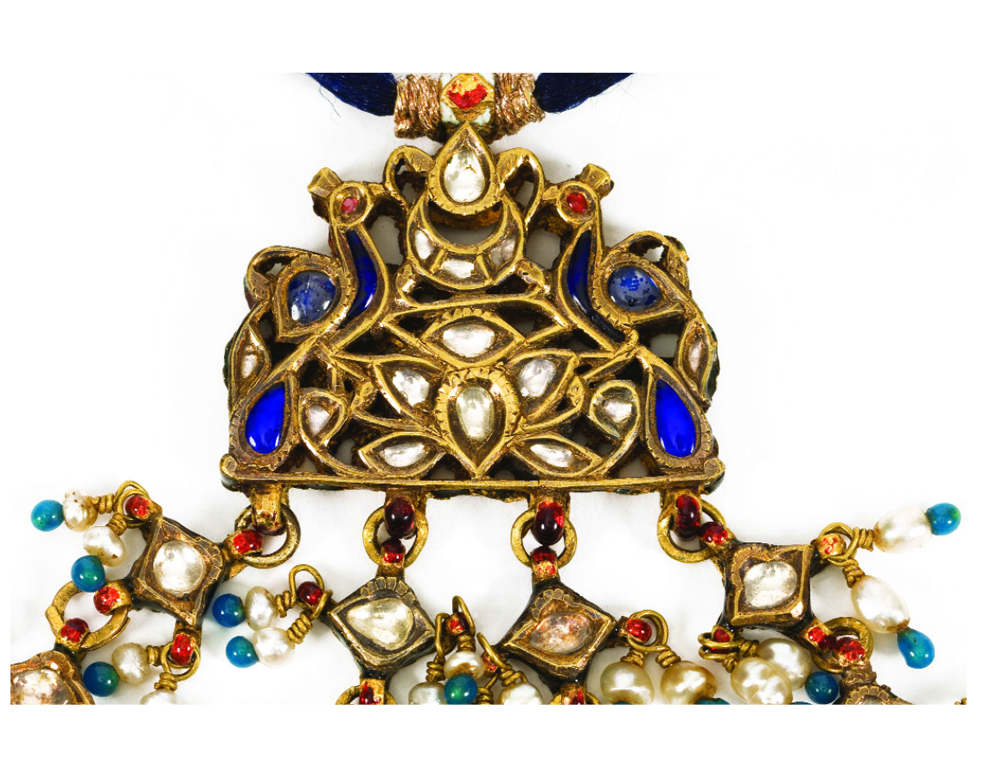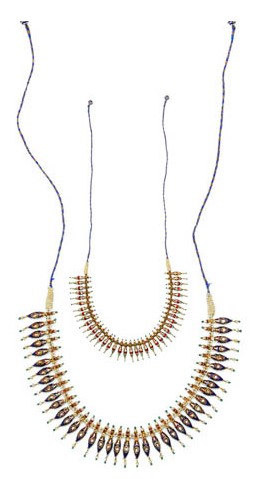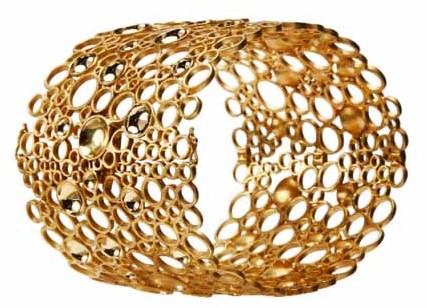The annual ritual ‘Design Inspirations’, a seminar organised by the Gem & Jewellery Export Promotion Council (GJEPC) in association with trend forecaster Paola De Luca of The Futurist Ltd., was held on the last day of IIJS Signature on February 16, 2020. A galaxy of speakers from various fields shared their experiences with the audience, giving them insightful directions whilst promoting an exchange of cross-disciplinary thinking. Here’s the first article in the Design Inspirations series based on the session dedicated to ‘Heritage and Values’.
Meet Fleur Damman-van Gelder and Noëlle Viguurs, the two sisters who run the Van Gelder Indian Jewellery (VGIJ) in the Netherlands, which was founded by their mother, Bernadette van Gelder-van der Ven in 1980. VGIJ is a leading international dealer, specialising in traditional Indian jewellery.
The sisters got hooked to the unique aesthetics of Indian jewellery and two decades later, they took charge of VGIJ. Even as they embraced the new world, they have not lost their grip on the company’s core business. India was, and remains, the focus of their collections, and last year, they relaunched the ‘Heritage’ and ‘Contemporary’ collection, which includes four lines – Colors, Jali, Jodha Bai and Chandra – all inspired by the country that is close to their heart.
An act of providence led Netherlands-based Bernadette van Gelder-van der Ven to dive deeper into Indian jewellery. The country’s culture, history, mythology and artistry fascinated her so much that she went on to specialise in Indian heritage jewellery. Soon, Van Gelder Indian Jewellery (VGIJ) grew into a leading international dealer, displaying its products at top galleries, museums and shows such as the TEFAF.
Her daughter, Noëlle, recalled Bernadette’s tryst with India during her keynote address at the ‘Heritage and Values’ session on the last day of IIJS Signature 2020. “The first time my mother travelled to India with my father, she felt like it was a homecoming. She was completely in love with the country, the people, their kindness and especially, the jewellery. India is a nation, but for us, it is a continent. Every culture, and the tradition in each and every corner of the country is different. It intrigues us so much that we want to know more,” she stated.
Bernadette’s entrepreneurial nature drew her to India a couple of times a year, and she began collecting heritage jewellery pieces to understand them. Noëlle said that this comprehensive study prompted her to specialise in Indian jewellery, adding, “If you want to achieve success, you need a bit of luck and my mother had that luck. She was at the right place at the right time. She also met the right people who guided her.”
THE FAMILY JEWELS
Growing up, Noëlle and Fleur, too, became acquainted with the history of Indian jewellery, courtesy Bernadette’s enthusiasm. “Every time she would return from India, we little kids would get to see unique jewellery and learn how to handle them; how to wear them; learn about their quality; the meena work and so on. It was a gift for us! Hence, it was a logical and natural decision to join the company once we grew up,” Noëlle added.
A small gold jhumar chabkka head ornament shows the openworked top kundan set with foiled white sapphires and rock crystal on blue foil (jadat) in an intricate pattern of flowers, a crescent moon and sun symbol, flanked by two peacocks. Suspended from the top is an elaborate fringe of gold collets, kundan-set with white sapphires, sides decorated with red and green enamel, suspended pearls and turquoise glass beads. The reverse of the jhumar is decorated with Safed Chalwan enamel, red and green on a white base in a crescent moon, flower and bird design, echoing the frontal design. The jhumar or chabkka is a traditional Muslim wedding ornament worn by women on the left side of the head. It is not an ornament that is to be worn daily.
The two sisters, who have an Arts background and spent years studying in Italy and France, joined VGIJ in 2000 to become torchbearers of their mother’s legacy. However, both were clear that they did not want to replicate what Bernadette did, but add their individualistic signature to the designs over time.
“Initially, we did what Bernadette had left behind, which itself was challenging. We displayed Indian jewellery at international art fairs like TEFAF and various art and exhibition events. Although the shows were successful, we later explored avenues to exhibit the collections through different collaborations. We curated museum exhibitions and teamed with fashion designers and also started our own contemporary jewellery collection,” Noëlle recollected.
As second generation businesspersons, the duo felt the urge to express their interpretation of Indian jewellery in the Netherlands, while remaining close to country’s tradition. They wanted to make these collections feasible through designs. Additionally, they wanted their designs to carry a detailed history with scientific specifications. So, in 2012, the sisters extended their research methods with a complete and factual scientific review by commissioning an independent precious metal and gemmological research report. They collaborated with Dr JC Zwaan of The Netherlands Gemological Laboratory Leiden.
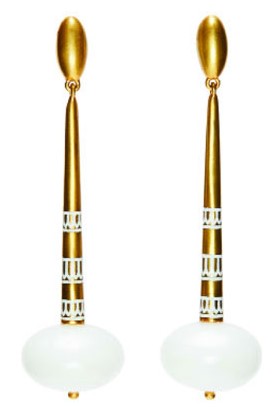
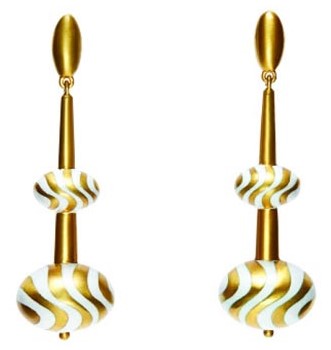
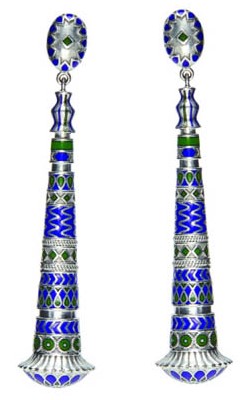
Today, every item in their collection is accompanied by a full art history and an independent gemmological scientific account, gold report, as well as its wear and tear information. “We take our responsibility and reputation with regard to our company, collection and clients very seriously.”
REVISITING TRADITION
In 2007, Fleur met with a serious accident, which put the pair’s plans on the backburner for a while. But overcoming this challenge, she emerged stronger and actually started sketching designs.
Talking about those trying times, Fleur said, “During this difficult time, I encountered a void that I wanted to explore and see what it brings me to. I wanted to go beyond to the acquired knowledge about Indian jewellery that we grew up with. The void gave me a distance to look from further than I could have ever imagined and visualise the outlines. And with the beautiful miniscule images that I used to see under the microscope in the lab made me discover the origin of quality, intricacy of designs, gems and their amazing flaws, and what makes something so special. This helped me embrace the new perspective to create the various collections.”
This resulted in the relaunch of the ‘Heritage’ and ‘Contemporary’ collections. The former is VGIJ’s backbone, and defines the best kind of sustainable luxury, which should be re-worn all the time. Fleur commented, “We look for museum-quality pieces, which are collectibles.” They also have a workshop in Amsterdam, where the company restores old jewellery with original elements.
The challenge in creating the ‘Contemporary’ range lay in infusing the same credence into it as the ‘Heritage’ collection. “We had to take care that the designs had multiple aspects – including tactile appeal. Above all, it had to be an intelligent, well-thought-through, balanced design.”
The ‘Colors’ collection was inspired by colours seen on the Indian streets – the colourful saris, belles carrying water pots gracefully with a flowing sense of femininity. The ‘Jaali’ (trellised) series was influenced by the screens of Fatehpur Sikri palace’s architecture, which have a linear geometric visual language.
“We incorporated rigid patterns in the line. The Jaali not only shields the view but filters light through it on the floor, regulates temperature by allowing air to come into the room in a compressed way. We wanted to lend that flowy and flexible feel to the collection,” explained Fleur.
BEJEWELLED BEAUTY
The ‘Jodha Bai’ collection, named after one of Mughal emperor Akbar’s favourite wives, is again inspired by her palatial quarters in Fatehpur Sikri. The ornate enamelled collection is an ode to the formidable queen.
Rajasthan evokes stories of the strength of Rajput warriors and rolling expanses of deserts. These elements are reflected in the ‘Chandra’ collection, which has solid and strong designs in silver or white gold jewellery. “Silver is represented by the moon and gold by the sun, and the combination symbolises the male and female influence. We will launch two more collections later in the year,” Fleur noted.
Sharing a few words of advice for designers wanting to make a mark for themselves, she suggested, “Make jewellery that is meaningful for you. Ask yourself, ‘What do I want to bring to the table?’ Your design represents who you are. Materialise your vision, and come back to the same question again and again: ‘Why did you want to be a designer in the first place?’
And if designers want to make inroads into foreign markets, it is important to use the power of styling – to envision the blending of Western and Eastern aesthetics, she said.
VGIJ continues to build bridges between international clients and India. And their glorious journey continues.


